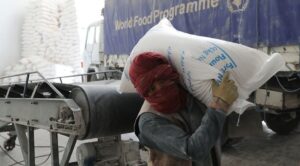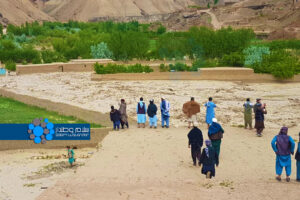KABUL (SW) – The survey findings of the Salam Afghanistan Media Organization (Salam Watandar Radio) based on the interviews with 326 women in 27 provinces show that 250 of these women, who constitute 77% of the statistical population of this survey, have faced violence.
Another 76 people, which is 23% of the respondents, answered the questionnaire of this survey and said that they have not experienced any violence so far. The participants of this survey are in different age groups and most of them are between 18 and 45 years old. In this survey, the educational status of the participants was also checked, and 48% of the respondents were high school students.
Definition
Violence against women is the behavior or even the threat of violent behavior based on gender that causes physical, sexual and psychological harm and suffering to women. According to this definition, coercion and arbitrary deprivation of women’s freedom, whether in the public or private arena, is considered violence against women.
Context
The phenomenon of violence against women in Afghanistan is as long as the history of this land, which has been shaped by various cultural and social factors. As much as the efforts to fight against this phenomenon are important, finding the roots and the contexts of violence against women is also extremely important. Violence in general and violence against women in particular usually happen in a closed and traditional society where the dominant social culture and political instability are seen as essential variables. Therefore, a serious question in this field research were aimed to investigate the level of violence against women in the country and the nature of violence.
After the collapse of the republican system in the country and as a result of the extensive political and social changes that followed, all the institutions that worked for women’s rights were dissolved or their activities were limited. During the last two years, almost no statistical reports have been made about women and the violence against them. Based on this, Salam Afghanistan Media Organization (Salam Watandar Radio) has launched a survey in 27 provinces in order to investigate the situation of violence against women after the recent political change, in which the amount, why and how of violence against 326 women were investigated and analyzed.
Research background
In the field of violence against women in Afghanistan and its causes, no serious work has been done in the past two years and only Radio Azadi has published a report, which shows that during the year 1401, more than 4500 cases of violence against women recorded.
In the report published by Radio Azadi, statistics from the United Nations Women’s Department and women activists were also used, and women’s rights activists recorded more than 4,500 cases of violence against women in Afghanistan during the year 1401. In this report, it is also stated that violence against women is increasing but there is no institution to register it.
The report published by Radio Azadi is a general report and at the same time, without specifying the statistical population, which is its weak point. But because it is one of the few works that have been done in this department, it is worthy of consideration.
Due to the importance of the issue and also the serious need that exists for women, in order to investigate the situation of violence against women in Afghanistan, Salam Watandar has considered 326 women as a statistical population in order to analyze the situation of violence against women by sampling their statements to analyze in Afghanistan. In the process of this research, 200 women participated in person, 80 women in direct contact and 38 women by answering the questionnaires that were shared through the internet.
Main questions:
1- How many women among the statistical population have been subjected to violence in this research?
2- What are the most important factors that contribute to the occurrence of violence against women?
3- Among the types of violence, which type of violence have women been exposed to the most?
Research objectives:
1- Examining the situation of violence against women after the collapse of the republican system, as a general goal.
2- Providing statistics on the number of women who have been subjected to violence.
3- Recognizing the causes and causes of violence against women.
4- Identifying the type of violence against women.
Research time:
This research was conducted during two months (from June 19 to August 19) of the current year and the data obtained from it were analyzed and reviewed.
Analysis method:
Due to the quantitative nature of this research, the data was prepared by generalizing the questionnaire and analyzed and analyzed using the SPSS program.
Research challenges:
Conducting any research work to investigate a social phenomenon in Afghanistan is faced with several challenges and these challenges become more prominent when the researched phenomenon happened in a traditional and closed society. Violence against women is a phenomenon whose cultural and social background is deep in Afghanistan, and sometimes women also contribute to the continuation of violence with self-censorship and silence rooted in social norms. The challenges that we faced during this research will be mentioned in a concise way:
1- Examining violence against women in the traditional society of Afghanistan is itself a taboo issue and less women talk about it.
2- Most of the women who were exposed to all kinds of violence were not ready to cooperate in the preparation of this research. They were silent in front of the violence directed at them.
3- The women who collaborated in this research were trying to share information in a managed manner, and the lack of morale and social trust was one of the major challenges.
4- Two years after the collapse of the republican system, public opinion’s trust in research and information institutions has weakened. For this reason, women hardly prepare to talk to the media and researchers.
5- The political restrictions that have been created against women have forced women to remain silent, which is due to the unavailability of data that reveals violence against women.
Main findings
This survey was conducted in 27 provinces, where Kabul with 31% of participants had the highest number of participants and Badakhshan with 1.6% had the lowest number of participants.
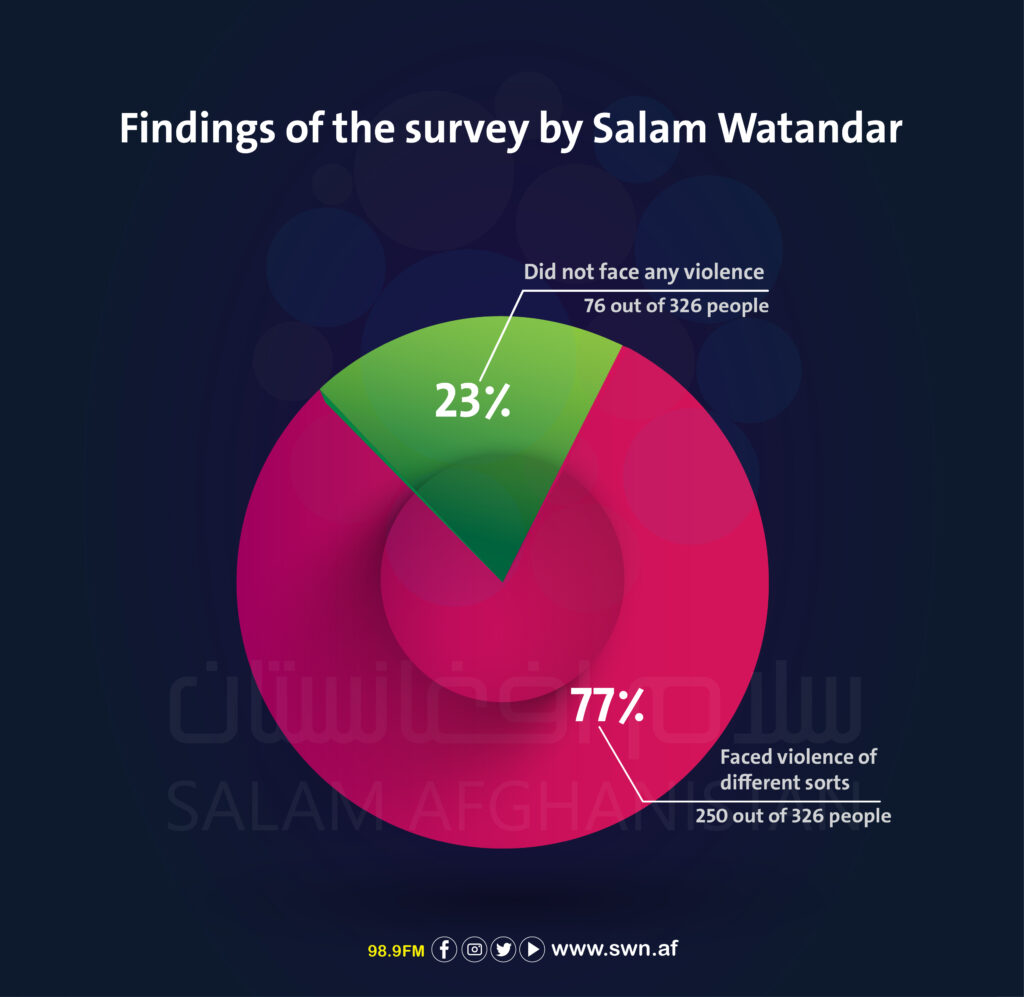
The participants of this survey are in different age groups and most of them are between 18 and 45 years old.
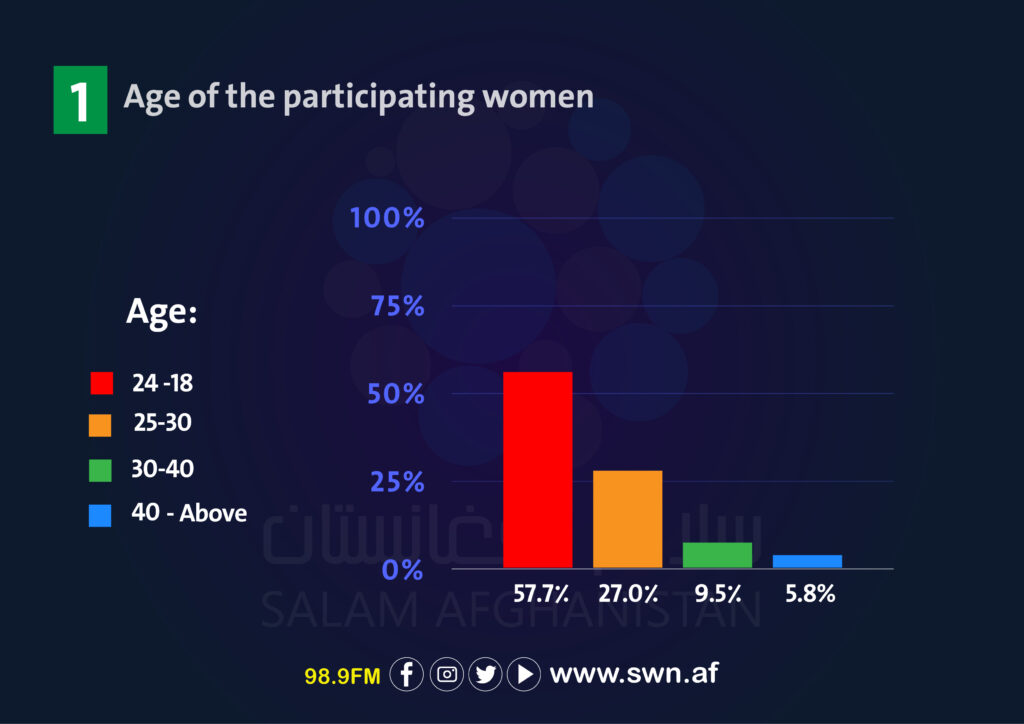
In this survey, the educational status of the participants was also checked, and 48% of the respondents were high school students.
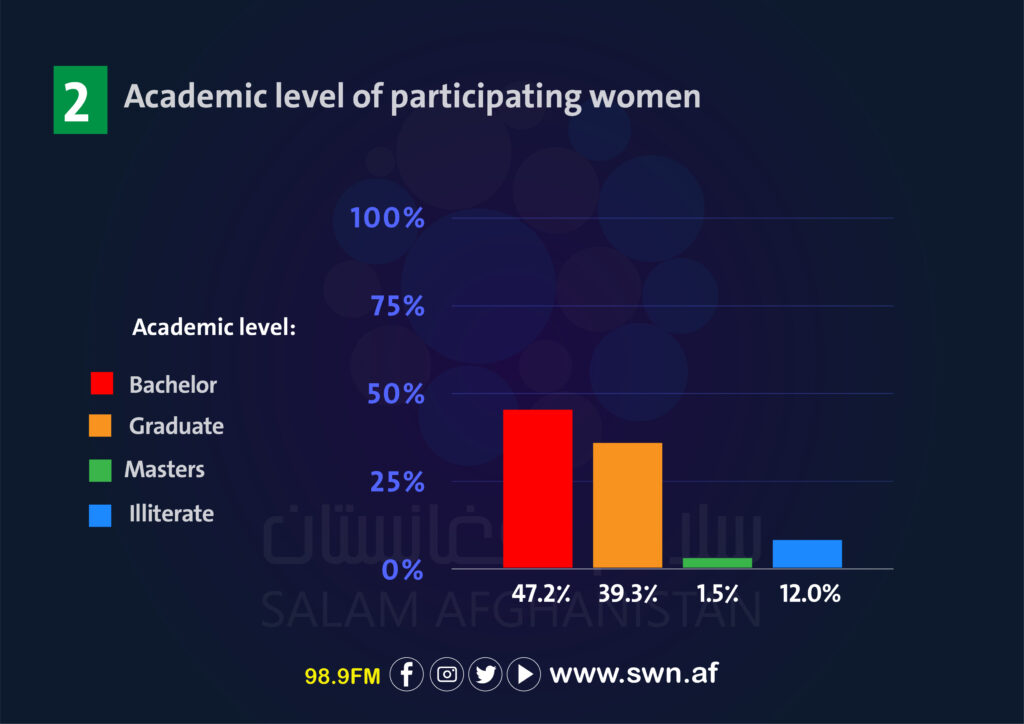
The findings of the Salam Afghanistan Media Organization from the review of the responses of 326 women in 27 provinces show that 77 percent or 250 of these women have experienced violence.
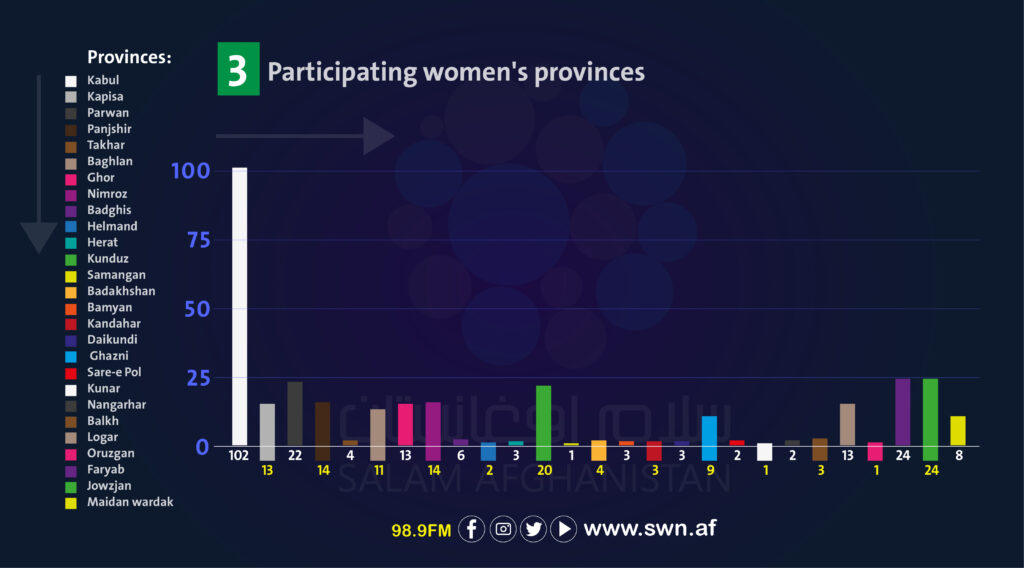
The findings show that some of these women have experienced several types of violence at the same time in such a way that 24% or 59 of these women experienced all three types of violence (sexual, physical and psychological) at the same time and 11 or 4% of them spoke about the experience of physical and psychological violence at the same time.
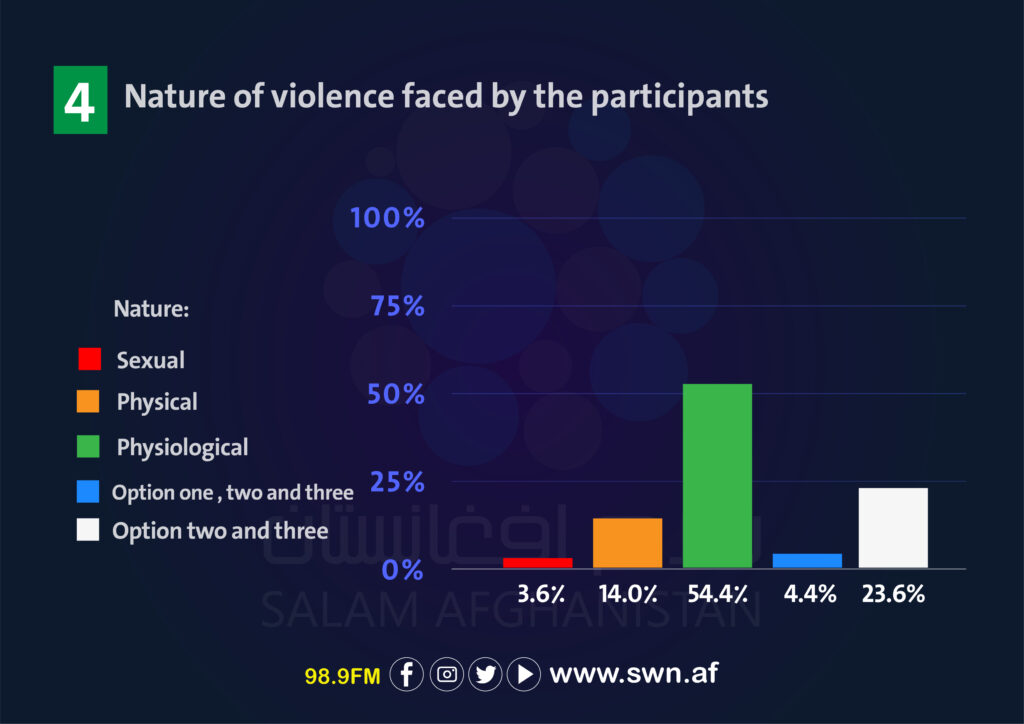
According to these findings, 54% or 136 of these women with psychological violence (gesturing, pointing, threatening, cursing, stalking, etc.), 14% or 35 of these women with physical violence (beating) and 4% of these women have faced sexual violence (rape).
According to the findings of this survey, 9% of the participants have been subjected to violence due to lack of support from the family, 45% due to lack of access to basic rights such as the right to work and education, and 13% due to poverty and unemployment. Nearly 8% of these women said that they were forced to commit an act against their will and another 7% said that they did not have the right to choose. 11% confirmed all the above cases, 2% did not specify any case and another 3% mentioned their behavior as the cause of violence against them.
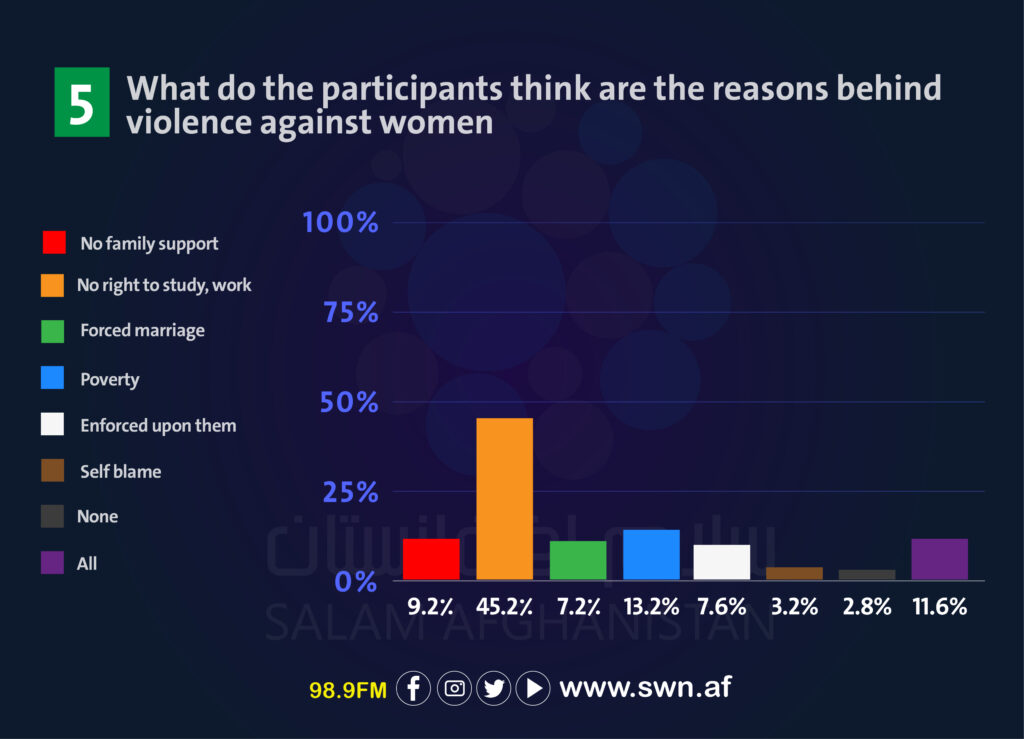
According to the findings of this survey, 42% of the participants have been subjected to violence due to lack of access to basic rights such as the right to work and education, and 11% due to poverty and unemployment. 6% of these women said that they were forced to commit an act against their will and another 6% said that they did not have the right to choose. 9% confirmed all of the above cases, 15% did not specify a case, and another 2% mentioned their behavior as the cause of violence against them.
43% of the respondents of this survey said that they were subjected to violence by ordinary people, 16% said that family members caused the violence, 9% said that they were subjected to violence by their father’s family, and 10% said that they were subjected to violence by their husbands. 100% were subjected to violence by the government forces and another 4% by the employer at work, and another 7% said they were separate from these cases.
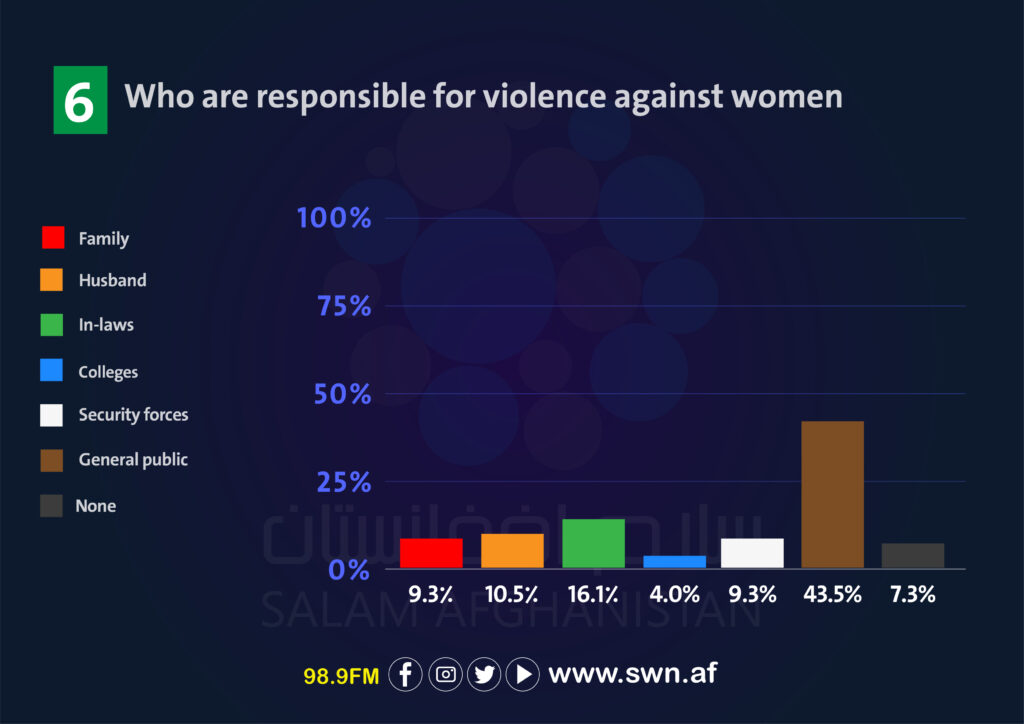
In the same way, women affected by violence in this survey, factors such as illiteracy and low level of public awareness, unsavory customs and traditions, discrimination, poverty and unemployment and increase in drug addiction, respectively 25, 22, 17, 16, They have mentioned 2 factors of violence against them.
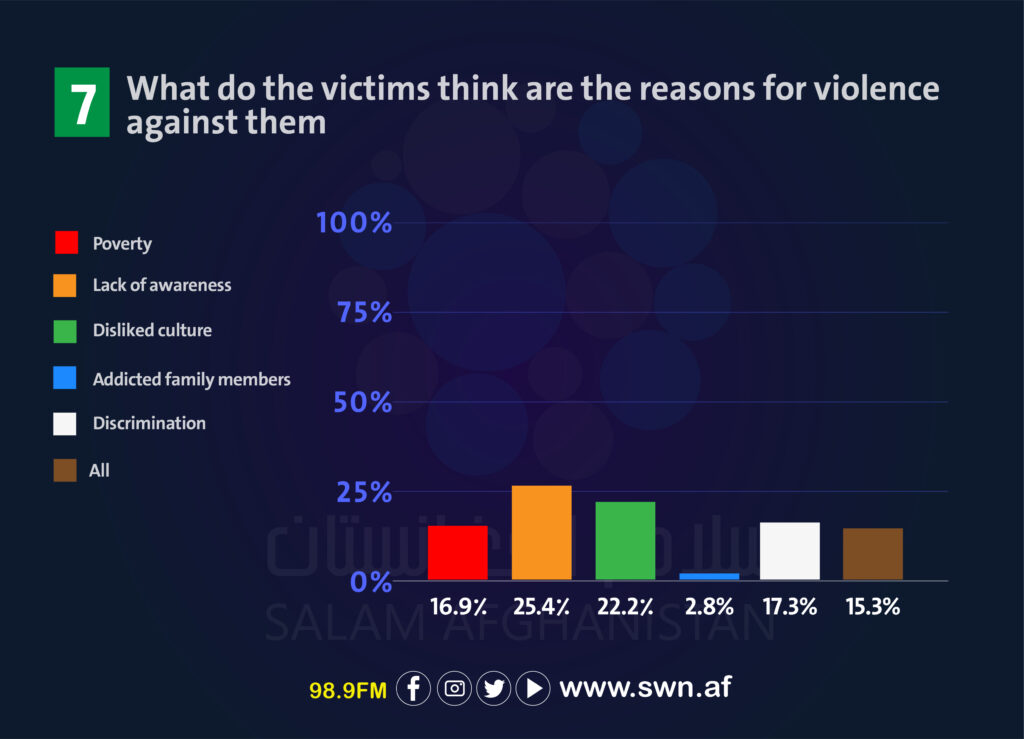
In this survey, the places of violence against women have also been investigated. 39% of the respondents said that on the way, 28% at home, 16% at educational places, 6% at work and 8% said that they faced violence in all these places.
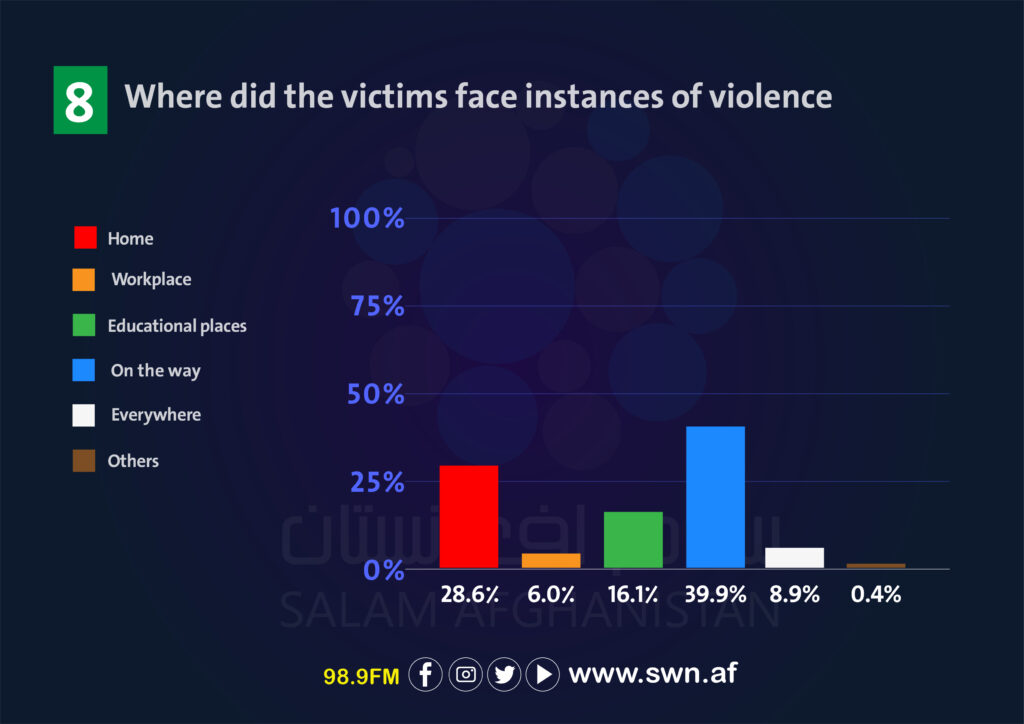
In this survey, measures taken after violence among affected women have also been investigated. 67% of the respondents said that they did not take any action to eliminate the violence or follow up on it, 30% said that they took action to eliminate and follow up on it, and the other three percent did not answer this question.
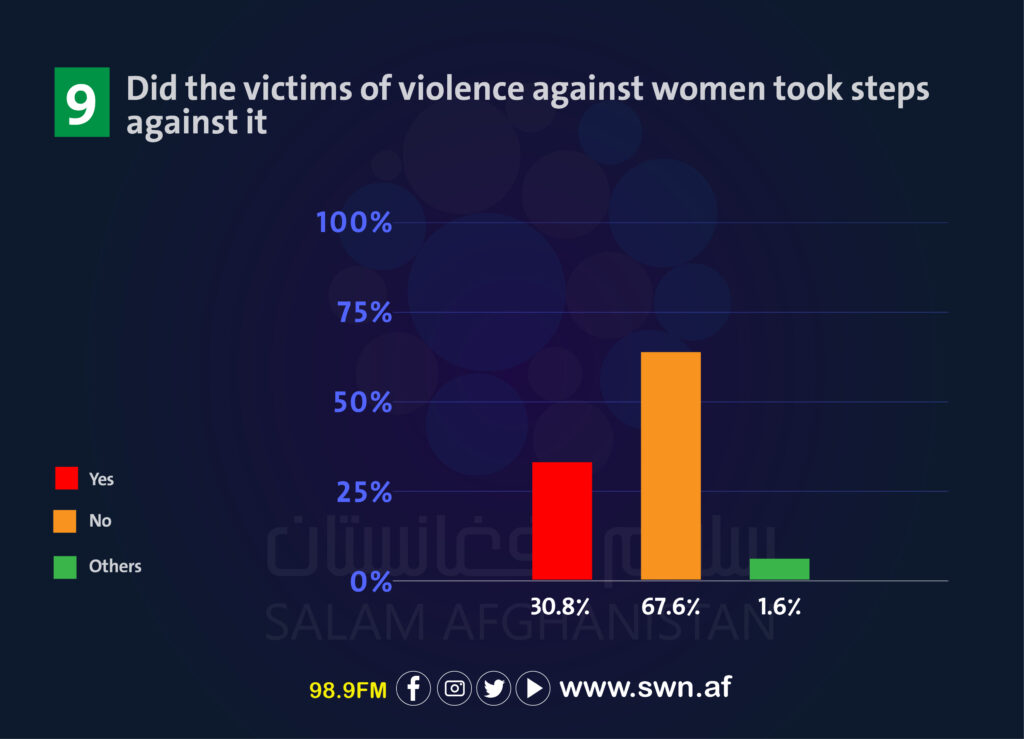
21% of the respondents said that they followed up or resolved the violence by talking to the family, 8% said that through judicial institutions, and another 5% said that they followed up and resolved this issue through security institutions.
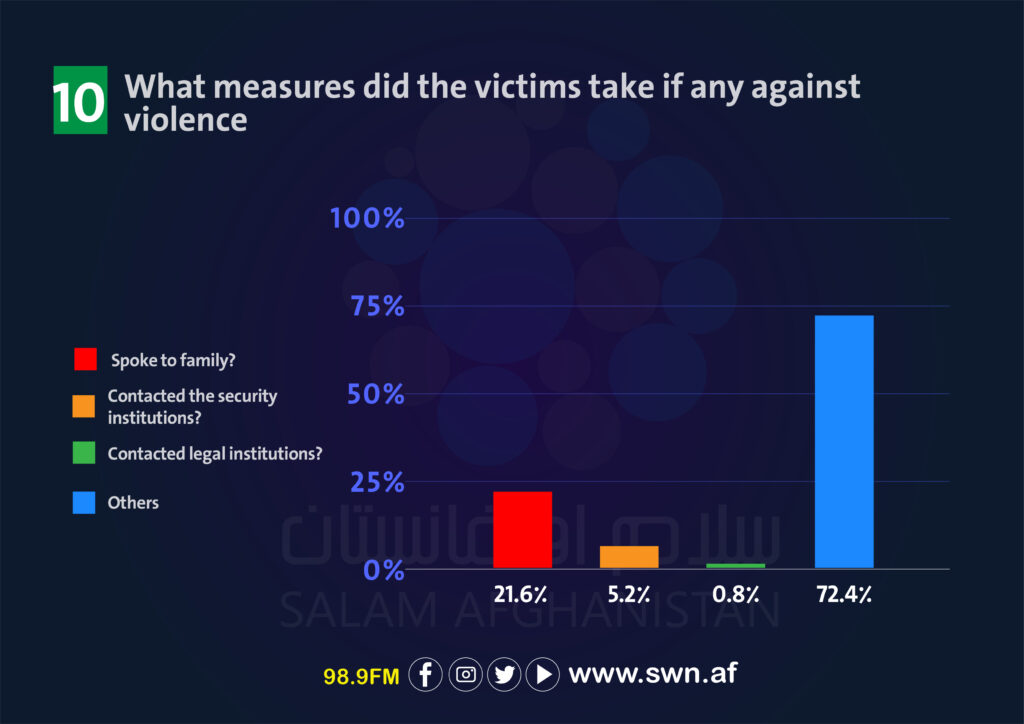
28% also said that they did not want to follow up and resolve the violence against them due to fear. 16% because of people’s opinion, 14% because of lack of support from relatives and friends, 10% mentioned all these cases because of lack of follow-up or action to eliminate violence against them.
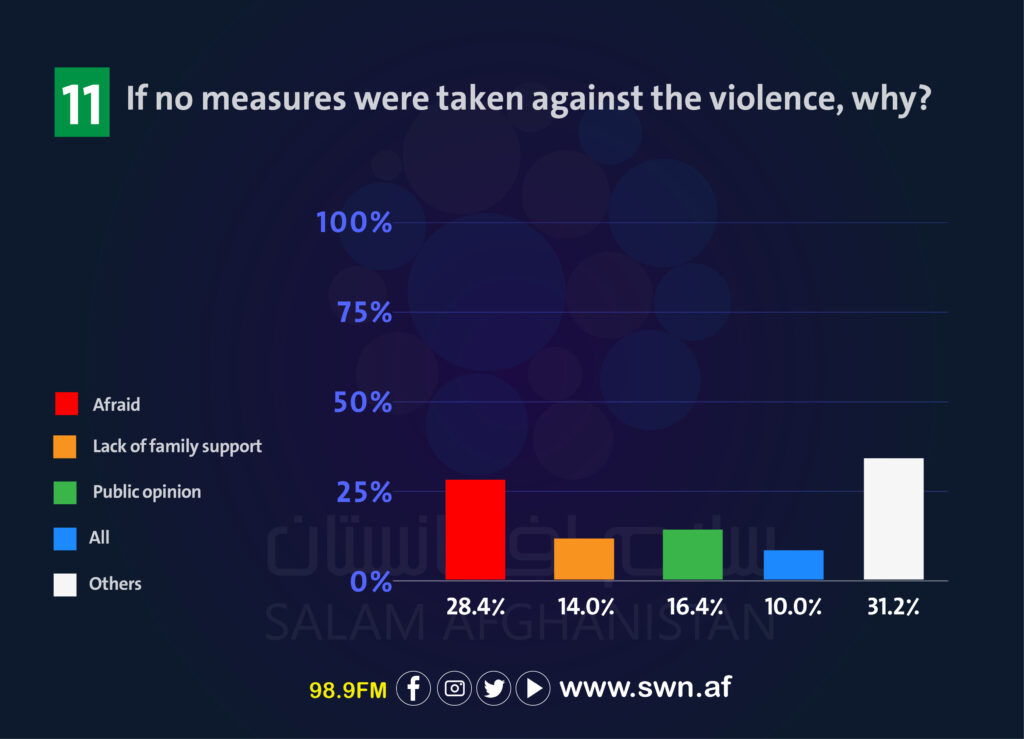
70% of women affected by violence in this survey said that they do not believe in the process of dealing with cases of violence against women but 28% said that they believe in dealing with cases of violence after the act, and another 2% did not answer this question.
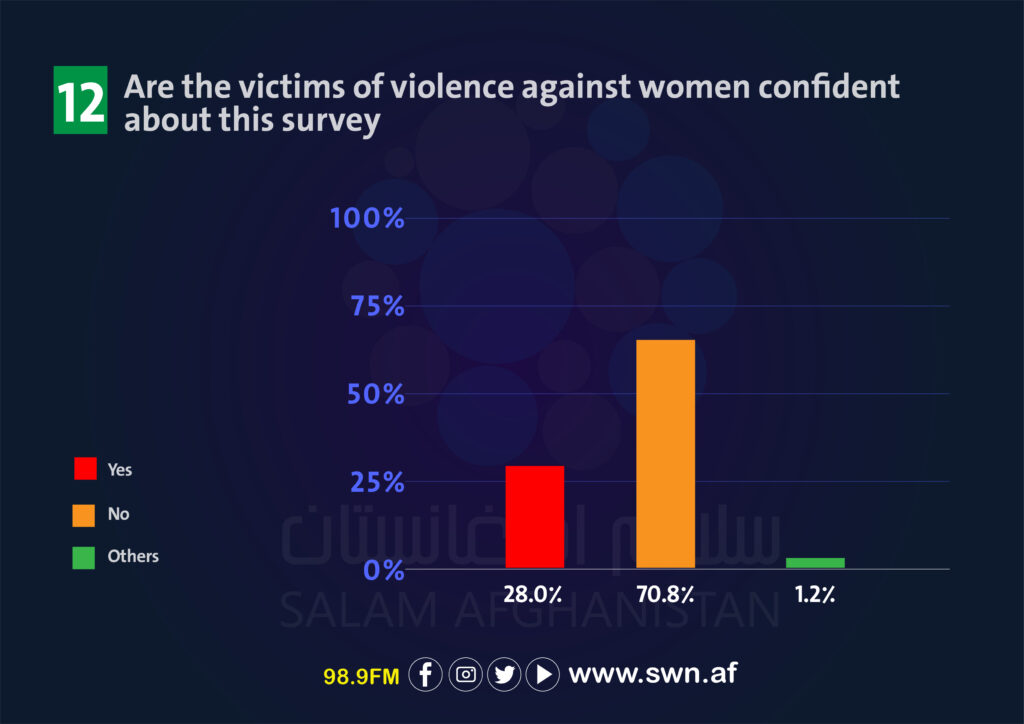
Suggestions:
To fight violence against women, the government and all citizens have a social responsibility to work together in this direction and take practical measures to eliminate this phenomenon. The actions that can be taken in this direction are as follows:
- According to the statistics and results obtained from this survey, it is suggested to the caretaker government to curb the cultural and social factors underlying violence against women and to act with a specific strategy to combat this phenomenon.
- The caretaker government is also asked to take practical steps in line with the commitment to end gender discrimination in the society.
Families are also suggested to help reduce the base of violence against women by strengthening the spirit of solidarity among family members, correcting the view of patriarchy in the family and putting an end to the superior view between boys and girls.
- Salam Watandar calls on all civil and media organizations of the country to act responsibly as influential and culture-creating channels with long-term strategies in order to reduce violence against women.
- Salam Afghanistan Media Organization (Salam Watandar Radio) requests researchers and media organizations to carry out social research, especially about women, and reveal social disorders (violence and its types) from time to time so that the attention of the relevant authorities can be drawn to solve this problem.
ENDS


